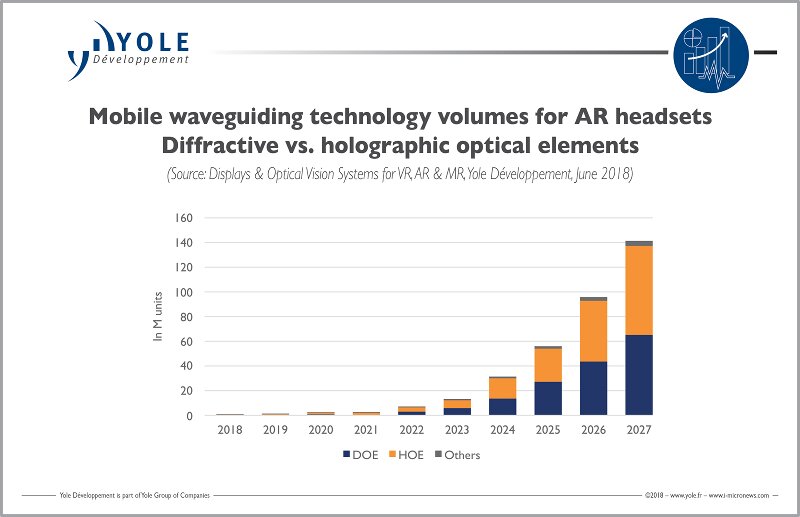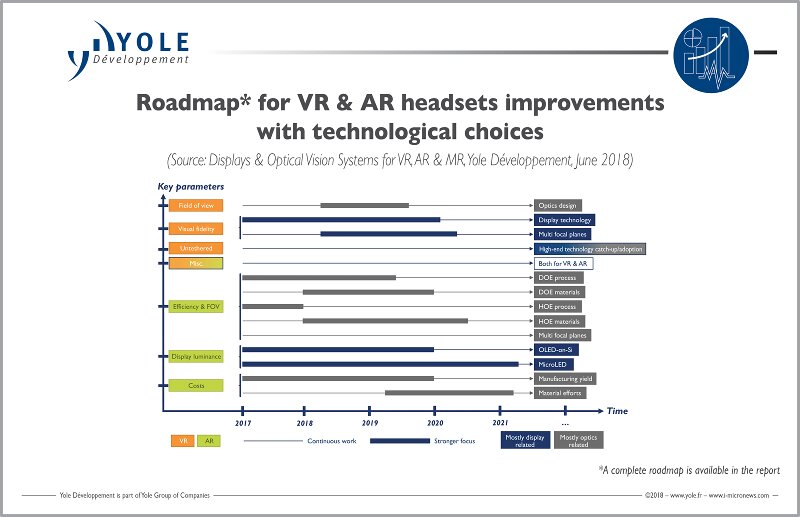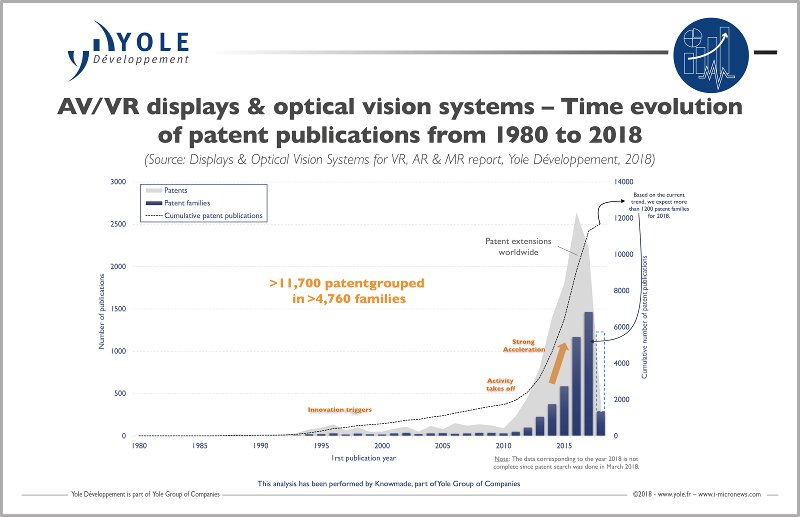Big companies, small and experienced companies, or even newcomers are part of today’s playground and many are trying to play their cards right, according to a new report from Yole. Today, VR and mostly AR are the key to unlock the next generation of consumer products. Dr. Zine Bouhamri, a technology and market analyst at Yole, commented:
“VR and AR have been hot topics for decades. Therefore, during the past 10 years, we identified a tremendous activity in this field — numerous startup creation, more and more big players involved in the development of new technologies and an increase in the number of patent filings, as well as many investments, mergers and acquisitions”.
The report presents the technical choices made by leaders as well as promising start-ups. It also describes the latest technical innovations and the competitive landscape of IP inputs. It is Yole’s first report focused on VR, AR and MR. Specialists in the fields of displays, micro LEDs, optics and manufacturing, Yole’s analysts evaluate current and emerging technologies and explain the market’s evolution.
VR appears to be a smaller market than AR and MR, analysts say. On top of that, VR isn’t the stuff of dreams anymore. It has become real — products are out there, available to the consumer. As these concepts aim to change reality, systems must be properly designed to trick the brain and produce a feeling of immersion. However, as the brain is a complex piece of machinery, VR/AR systems require advanced technologies that aren’t quite ready yet.
The key is to understand what must be developed in terms of displays and optics for these headset markets to thrive. VR has been developed with off-the-shelf components, mainly smartphone-sized displays and magnifying lenses. However, the field of view in today’s headsets is small and restricts the user’s immersion in the image, analysts say. Improving device optics may seem trivial but it implies ergonomic and manufacturing challenges regarding headsets’ size, weight and scalability.

Improving field of view without improving pixel density reduces the number of pixels over each degree of visual acuity, which restricts immersion again. Therefore, displays need to improve pixel density, amongst other parameters, in parallel with optics improvements but associated technical and manufacturing challenges are difficult to overcome.
Alternative developments are ongoing and should pave the way towards an ideal VR headset — one with the proper number of pixels per degree and a wide field of view at a high framerate, with perfect colour reproduction and a compact form factor. This would not be for videogames only, even though it is the easiest sector to market, analysts say.

On the opposite end, AR headset applications are less driven by videogames but by real use cases deployed within industry or developed for consumer comfort. Dr. Bouhamri also said:
“AR is right around the corner but technology is still limited and/or expensive. New optics and display elements could help the AR market soar”.
AR presents a very different visual paradigm compared to VR, as the user needs to clearly see the world through superimposed virtual images. Having a screen in front of the eye is impossible, so the image must be brought to the eye in an efficient and undistorted manner.

AR is already big in the military, a field in which there are few restrictions in terms of size, volume and design, analysts say. The consumer wants nothing but a sleek headset that must not be cumbersome and be perfectly see-through. The road to miniaturisation and cost reduction of existing technology is extremely complex.
Physics cannot be violated, and “étendue” (scope) management, efficient diffraction, transparency, field of view and many other parameters have to be handled. Similarly to VR, developments are ongoing and will define the roadmap for upcoming AR headsets. However, due to manufacturing challenges, adoption will start slowly before markets soar.
The full report can be purchased via the i-Micronews website.

